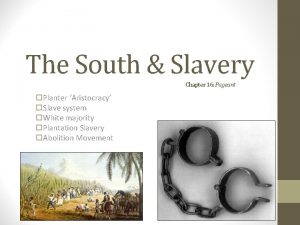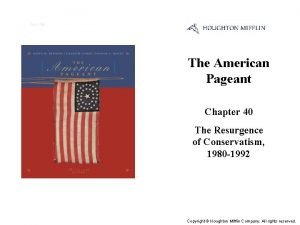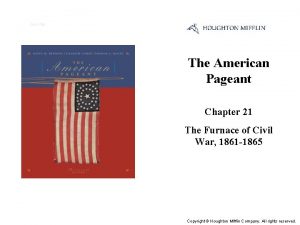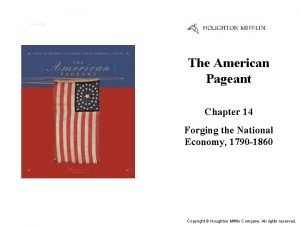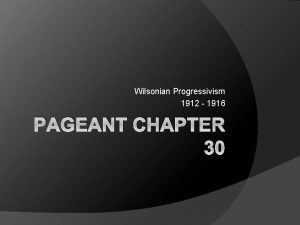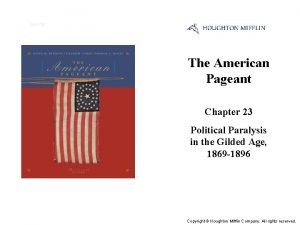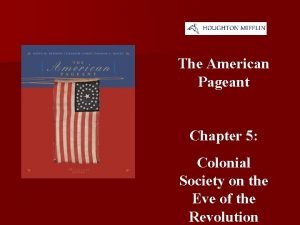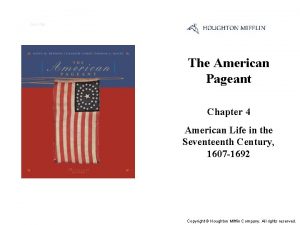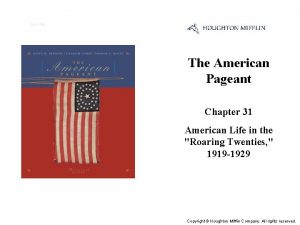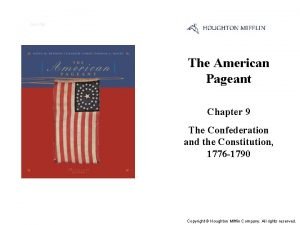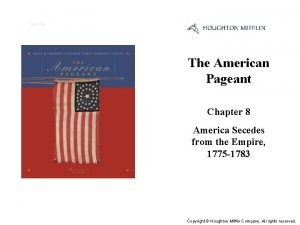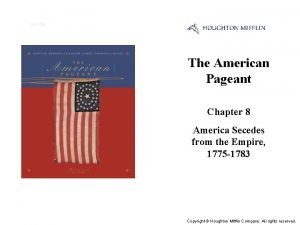Cover Slide The American Pageant Chapter 23 Political









- Slides: 9

Cover Slide The American Pageant Chapter 23 Political Paralysis in the Gilded Age, 1869 -1896 Copyright © Houghton Mifflin Company. All rights reserved.

Election Campaign in Baton Rouge, Louisiana, c. 1868 A Republican Party brass band in action during the 1868 election campaign in Baton Rouge, Louisiana. The Union regimental colors and soldier caps demonstrate the strong federal presence in the South at this pivotal moment in Radical Reconstruction. (Andrew D. Lytle Collection, Louisiana and Lower Mississippi Valley Collections, LSU Libraries, Louisiana State University, Baton Rouge, Louisiana) Copyright © Houghton Mifflin Company. All rights reserved.

Funeral of President Lincoln, New York, April 25, 1865 by Currier & Ives The death of President Lincoln caused a vast outpouring of grief in the North. As this Currier and Ives print shows, his funeral train stopped at several cities on its way to Illinois to allow local services to be held. (Anne S. K. Brown Military Collection, John Hay Library, Brown University) Copyright © Houghton Mifflin Company. All rights reserved.

Railroad strike of 1877 This engraving depicts striking railroad workers in Martinsburg, West Virginia, as they stop a freight train on July 17, 1877, in the opening days of the great railway strike of that year. Engravings such as this, which show the strikers to be heavily armed, may or may not have been accurate depictions of events. But the photography of that day could rarely capture live action, and the technology of the day could not reproduce photographs in newspapers, so the public's understanding of events such as the 1877 strike was formed through artists' depictions. (Library of Congress) Copyright © Houghton Mifflin Company. All rights reserved.

Map: Popular Vote for President in the South, 1872 This map shows which candidate carried each county in the southeastern United States in 1872. Looking at both this map and the chapter-opening map, you can see the relation between Republican voting and African American population in some areas, as well as where the southern Republican Party drew strong support from white voters. Copyright © Houghton Mifflin Company. All rights reserved.

Map: Popular Vote for Weaver, 1892 The Populist Party's presidential candidate, James B. Weaver, made a strong showing in 1892. This map indicates that his support was concentrated regionally in the West and South but that he had relatively little support in the northeastern states. Copyright © Houghton Mifflin Company. All rights reserved.

Map: Presidential Election, 1896 Bryan could not win with just the votes of the South and West, for they had few electoral votes. Even if he had won all the West, South, and border states, he still would have needed one or more northeastern states. Mc. Kinley won in the urban, industrial core region and the more prosperous farming areas of the Midwest. Copyright © Houghton Mifflin Company. All rights reserved.

Map: The Barrow Plantation, 1860 and 1881 The transformation of the Barrow plantation in Oglethorpe County, Georgia, illustrates the striking changes in southern agriculture during Reconstruction. Before the Civil War, about 135 slaves worked on the plantation, supervised by an overseer and a slave foreman. After the war, the former slaves who remained on the plantation signed labor contracts with owner David Crenshaw Barrow. Supervised by a hired foreman, the freedmen grew cotton for wages in competing squads, but they disliked the new arrangement. In the late 1860 s, Barrow subdivided his land into tenant farms of twenty-five to thirty acres, and freedmen moved their households from the old slave quarters to their own farms. By 1881, 161 tenants lived on the Barrow plantation, at least half of them children. One out of four families was named Barrow. Copyright © Houghton Mifflin Company. All rights reserved.

Map: The Presidential Election of 1876 and the Compromise of 1877 In 1876 a combination of solid southern support and Democratic gains in the North gave Samuel Tilden the majority of popular votes, but Rutherford B. Hayes won the disputed election in the electoral college, after a deal satisfied Democratic wishes for an end to Reconstruction. Copyright © Houghton Mifflin Company. All rights reserved.
